
The liver
Dr,Dler Omer
4
th
year-2016
The liver is the largest organ in the body, weighing 1.5 kg in
the average 70-kg man.
The liver parenchyma is entirely covered by a thin capsule and
by visceral peritoneum on all but the posterior surface of the
liver, termed the ‘bare area’.
The liver is divided into a large right lobe, which constitutes
three-quarters of the liver parenchyma, and a smaller left
lobe.
Surgical resection of these lobes would be termed a right or
left lobectomy.
The liver divided into (anatomical): right & left lobes by
the falciform ligament.
divided into right & left surgical (functional) lobes along
gall-bladder fossa and MHV
Liver segments (v – viii) to the right of this line are
supplied by the right hepatic artery, right branch of portal
vein, and drain bile via Rt hepatic duct.
To the left of this
line (segments i – iv), functionally is the left liver.
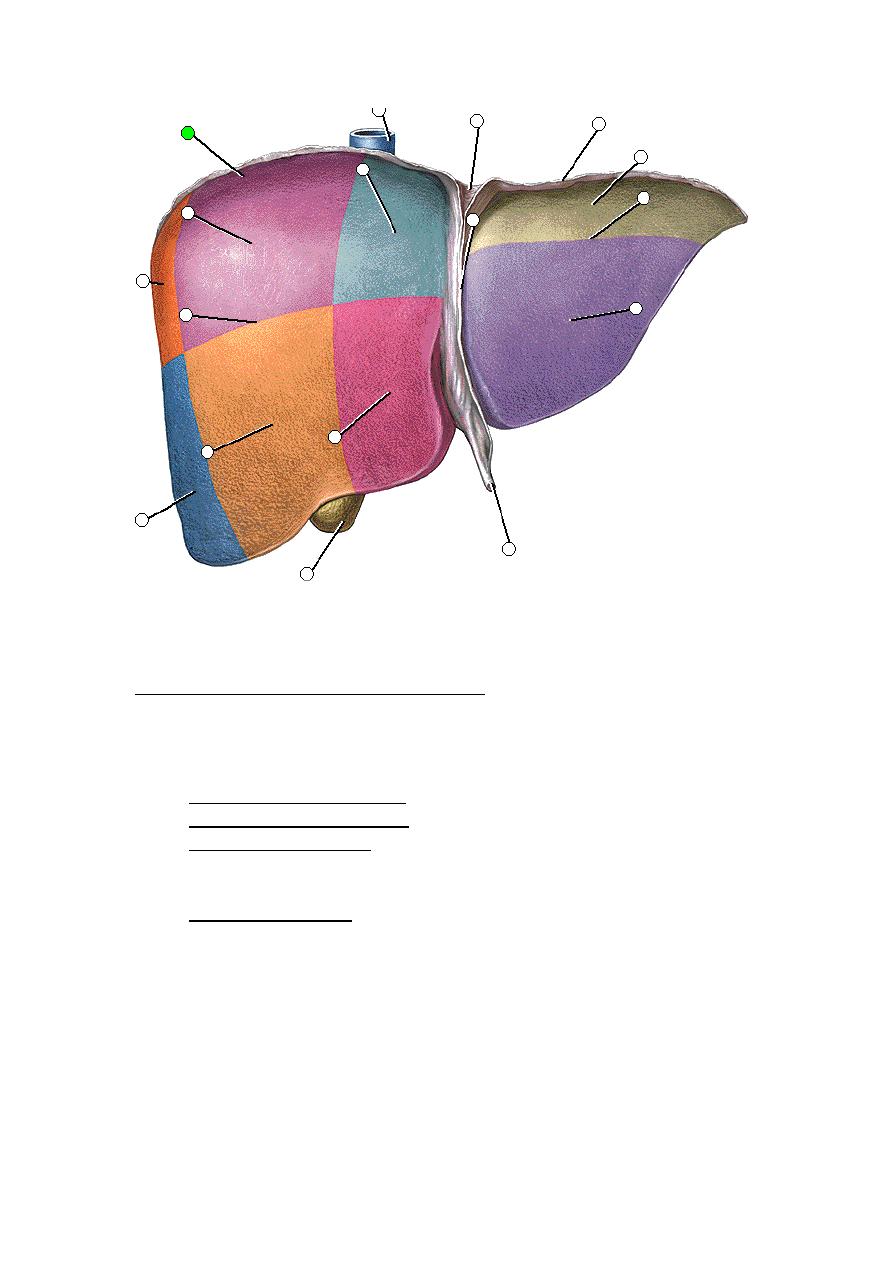
Ligaments & peritoneal reflections:
•
The liver is fixed in the RUQ by peritoneal reflections that
form ligaments:
1.
LT triangular ligament: left lobe to diaphragm
2.
RT triangular ligament: fixes Rt lobe to Rt hemidiaphragm.
3.
falciform ligament (remnant of umbilical vein): runs from
umbilicus to the liver , attaching it to posterior aspect of
ant. Abd. Wall.
4.
lesser omentum: betw stomach & liver, contains hilar
structures in its free edge
Blood supply
80% from portal vein &
20% from hepatic artery.
The venous drainage is via the hepatic veins into the IVC.
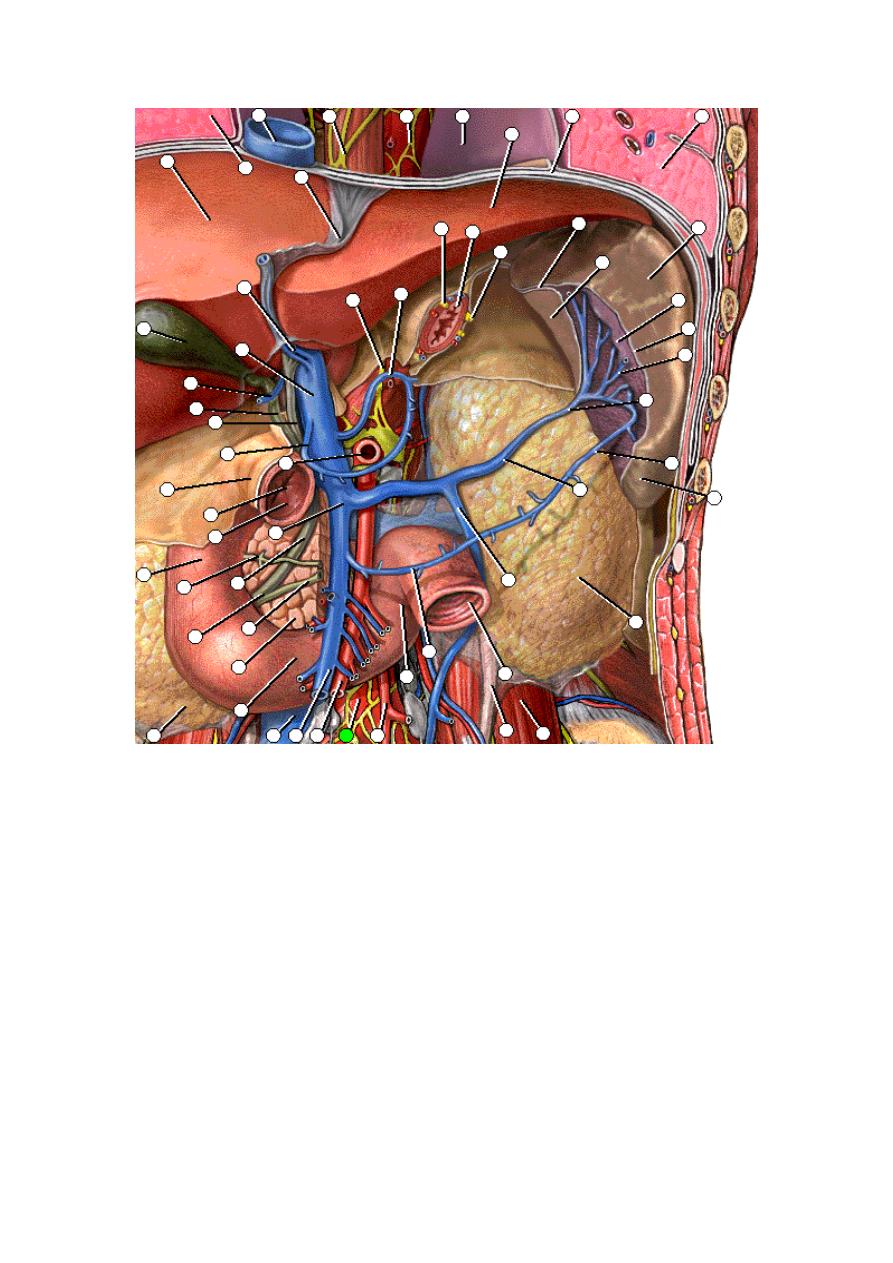
Structures in the hilum of the liver: -
The hepatic artery,
portal vein, &
bile duct
((are present in the free edge of the lesser omentum or
(hepatoduodenal ligament)).
At the hilum the major structures divide into right & left
branches.
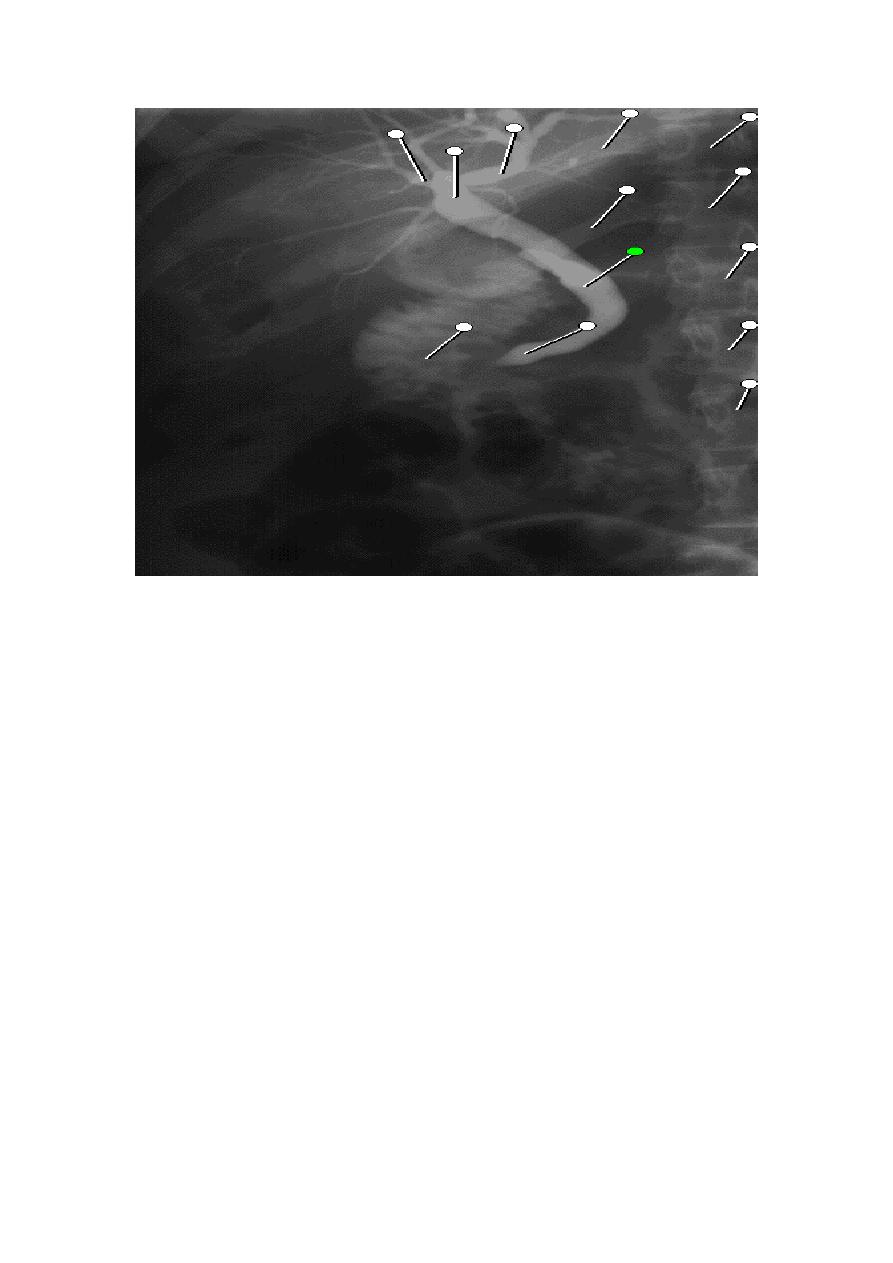
Main functions of the liver:
1.
maintaining core body temperature
2.
pH balance & correction of lactic acidosis
3.
synthesis of clotting factors
4.
glucose metabolisim, glycolysis and gluconeogenesis
5.
urea formation from protein catabolism
6.
bilirubin formation from haemoglobin degradation
7.
drug & hormone metabolism
8.
removal of gut endotoxins and foreign antigens.
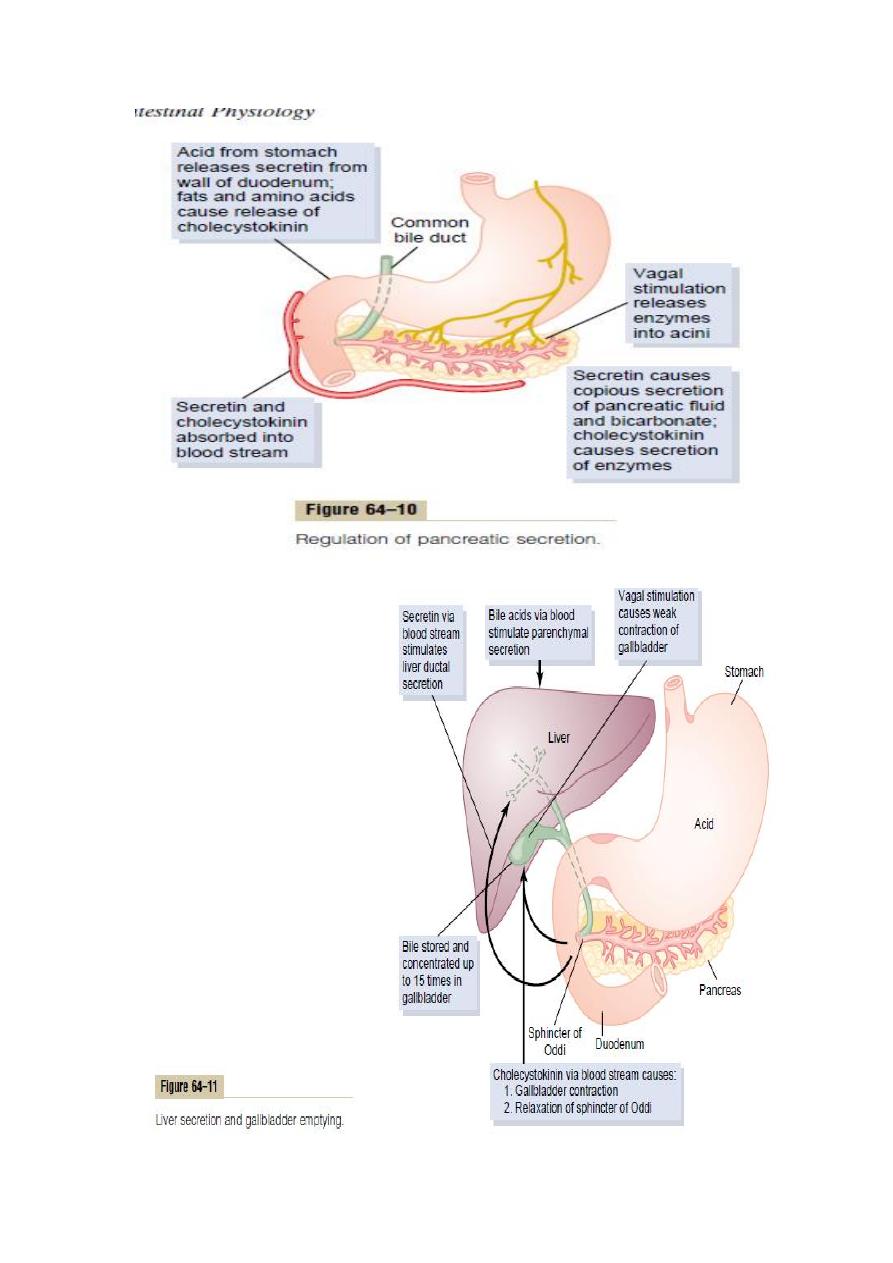
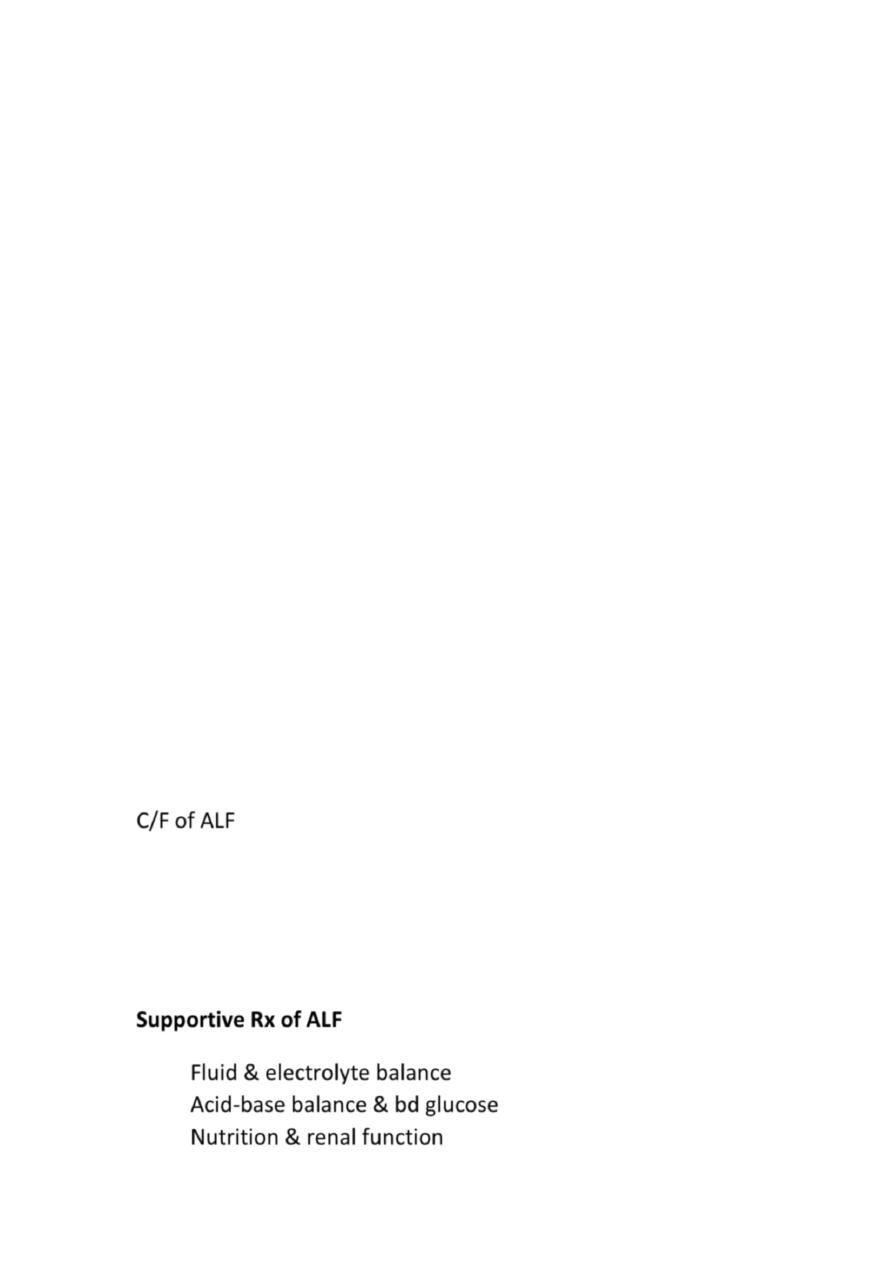
Tests of liver function
1.
Bilirubin: 5-17 umol/l (direct <5) increase in haemolytic,
hepatocellular dysfunction (defect in transport &
excretion), biliary obst
2.
Alk. Pho ALP: 35-130 iu/l
3.
Aspartate transaminase AST: 5-40
4.
Alanine transaminase ALT: 5-40
5.
Gamma-glutamyl transpeptidase GGT: 10-48
6.
ALBUMIN : 35-50 gm/l
7.
PT: 12-16 seconds
Acute liver failure: causes
1.
Viral hepatitis (ABCDE)
2.
Drug
reactions
(halothane,
INH-rifampicine,
antidepressants, NSAIDS,
3.
Paracetol oversose
4.
Mushroom poisoning
5.
Shock & MOF syndrome
6.
Acute Budd-chiari syndrome
7.
wilson’s disease
8.
Fatty liver of pregnancy
C/F of ALF
•
Early stages: mb no signs
•
Severe cases: jaundice, neurological signs of liver failure
(liver flap, drowsiness, confusion, coma)
•
MR 50%
•
Liver transplant: some pts – poor results
Supportive Rx of ALF
1.
Fluid & electrolyte balance
2.
Acid-base balance & bd glucose
3.
Nutrition & renal function
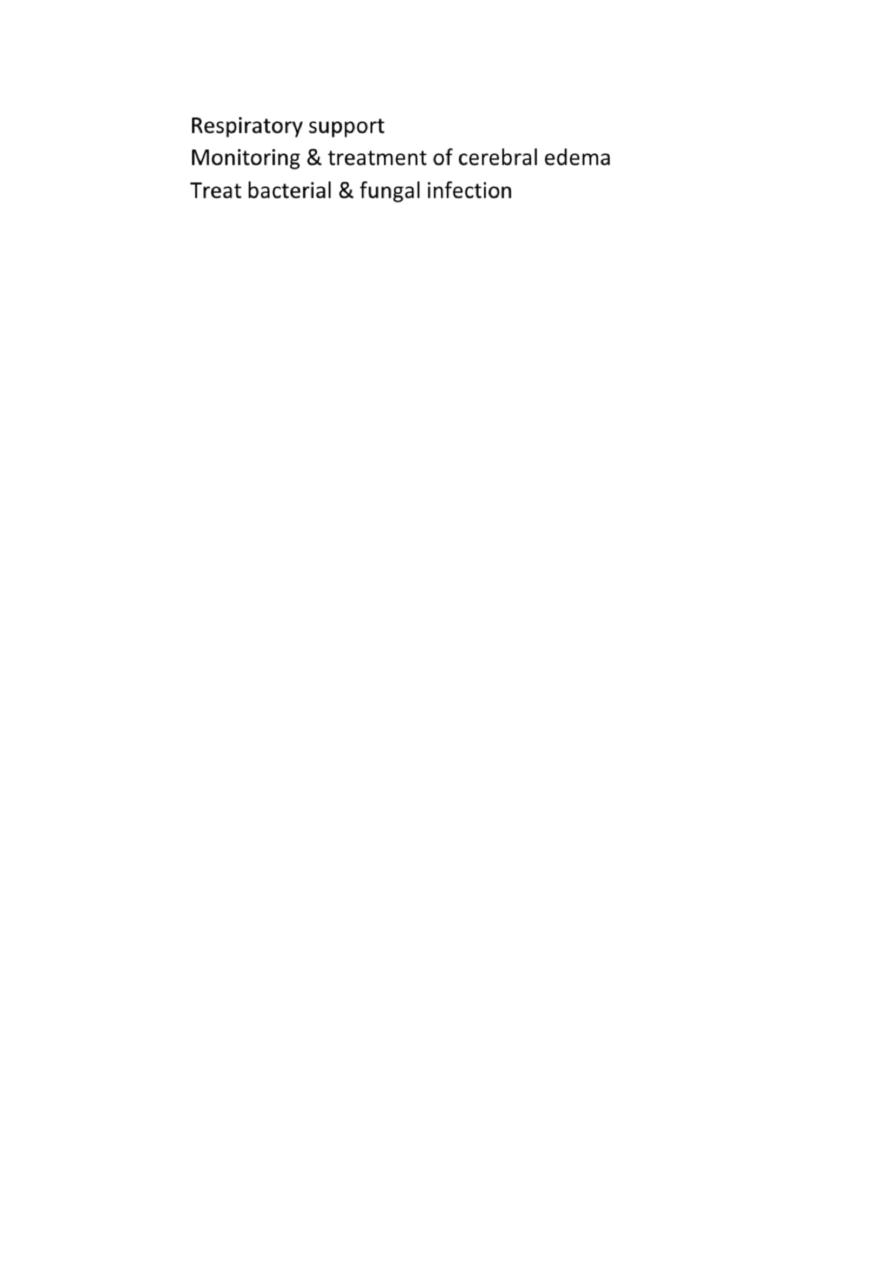
4.
Respiratory support
5.
Monitoring & treatment of cerebral edema
6.
Treat bacterial & fungal infection
Chronic liver disease
Lethargy weakness ------- jaundice
Fever: cytokine release from diseased liver, bacterial
infection
Muscle wasting,
Coagulopathy: skin bruising
Hepatic encephalopathy: memory impairment, confusion,
slow slurred speech, flapping tremor
Portal hypertension, ascites, oesophageal varices,
splenomegaly
Endocrine: hypogonadism & gynaecomastia
Skin changes: spider naevi, palmar erythema, cutaneous
nodules, white nails (leuconychia)
Child’s classification of hepatocellular function in cirrhosis
(severity of CLD)
Group designation A B C
Bilirubin (mg dl–1) < 2.0 2.0–3.0 > 3.0
Albumin (g dl–1) > 3.5 3.0–3.5 < 3.0
Ascites None Easily controlled Poorly controlled
Neurological disorder None Minimal Advanced
Nutrition Excellent Good Wasting

Imaging the liver
Imaging modality Principal indication
------------------------- ------------------------------
Ultrasound Standard first-line investigation
Spiral CT Anatomical planning for liver surgery
MRI Alternative to spiral CT
MRCP First-line, non-invasive cholangiography
ERCP Imaging the biliary tract when endoscopic
intervention is anticipated (e.g. ductal stones)
PTC Biliary tract imaging when ERCP impossible or
failed
Angiography To detect vascular involvement by tumor
Nuclear medicine To quantify biliary excretion and tumor
spread
Laparoscopy/ To detect peritoneal tumor spread and
laparoscopic superficial liver metastases
